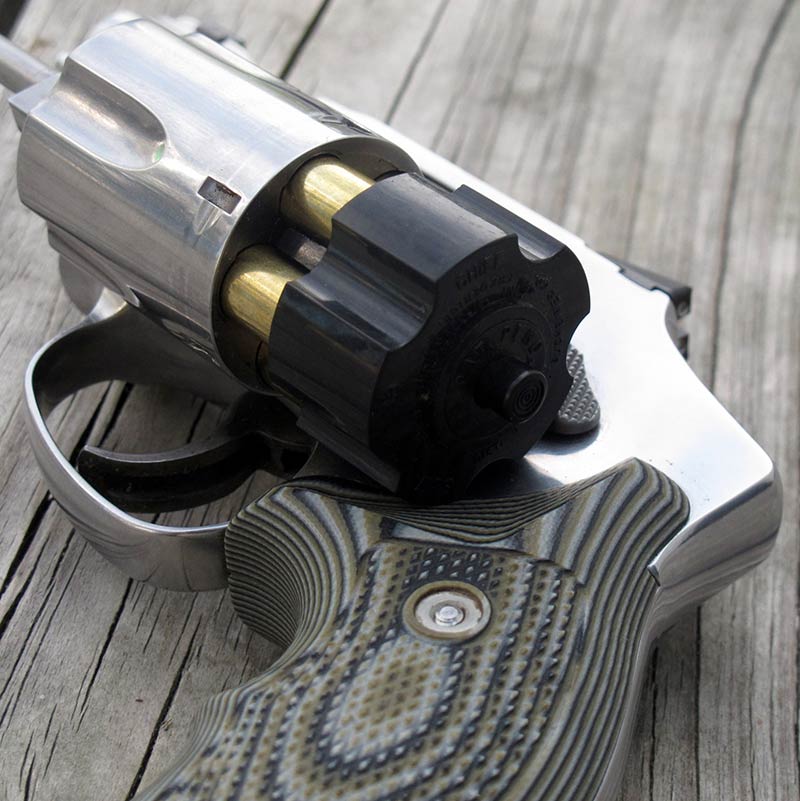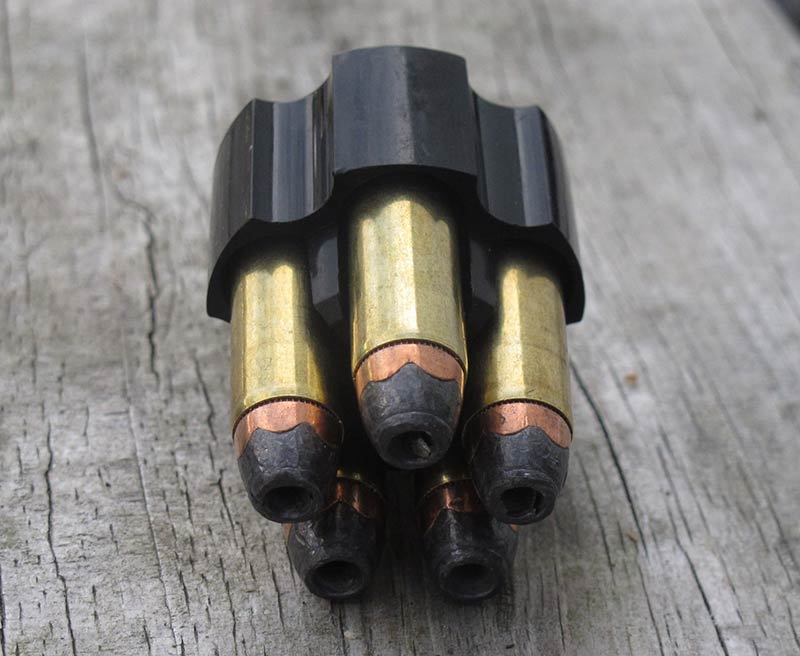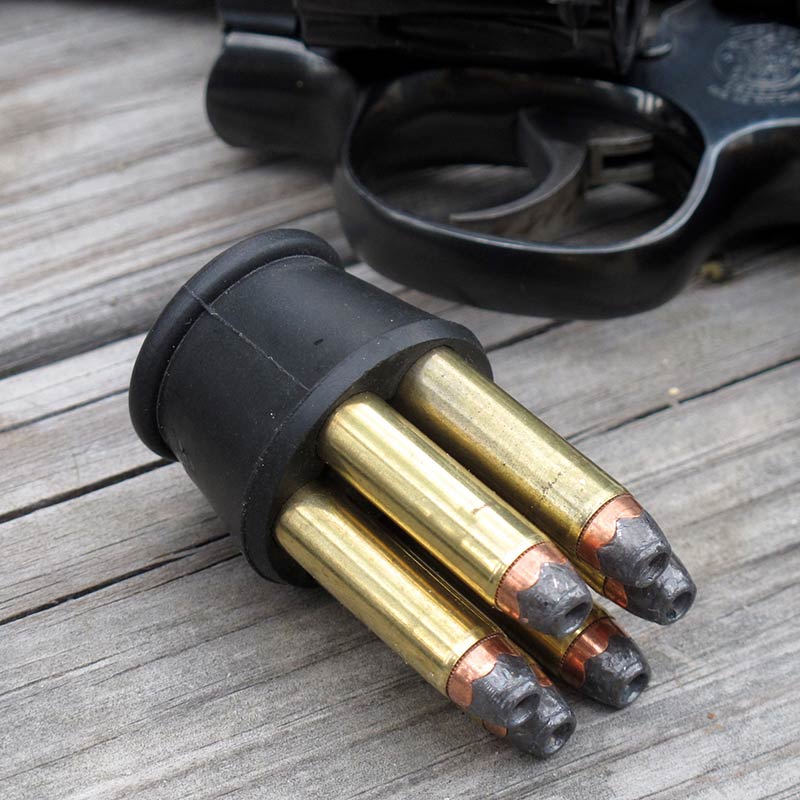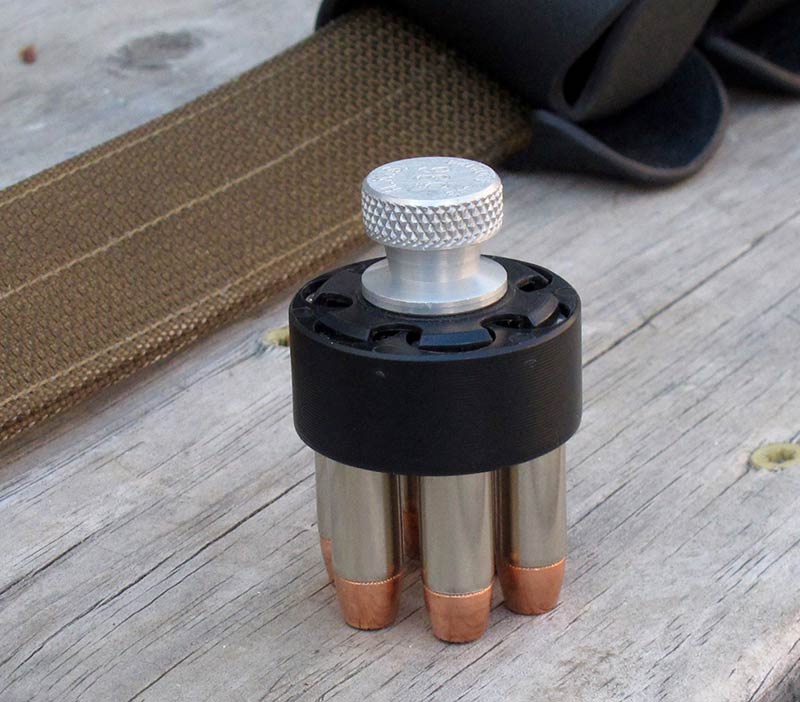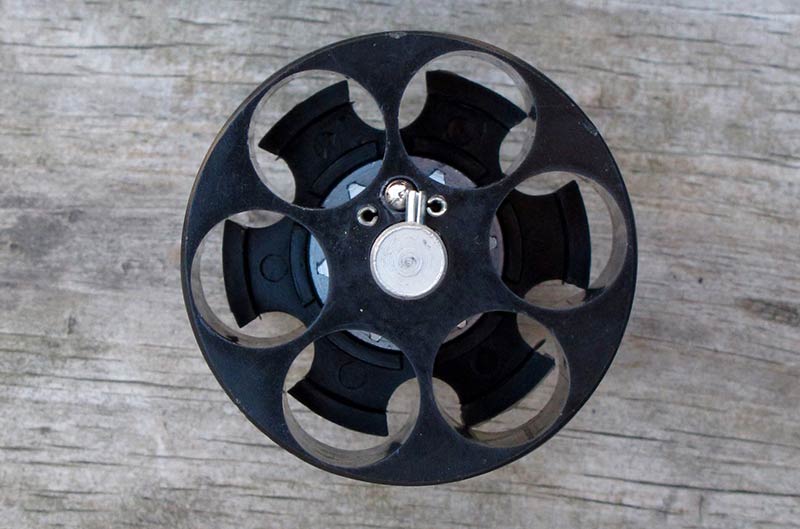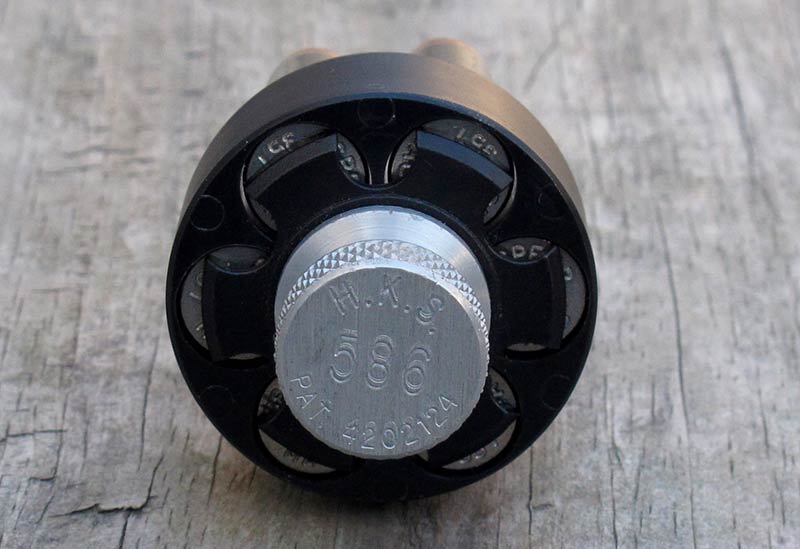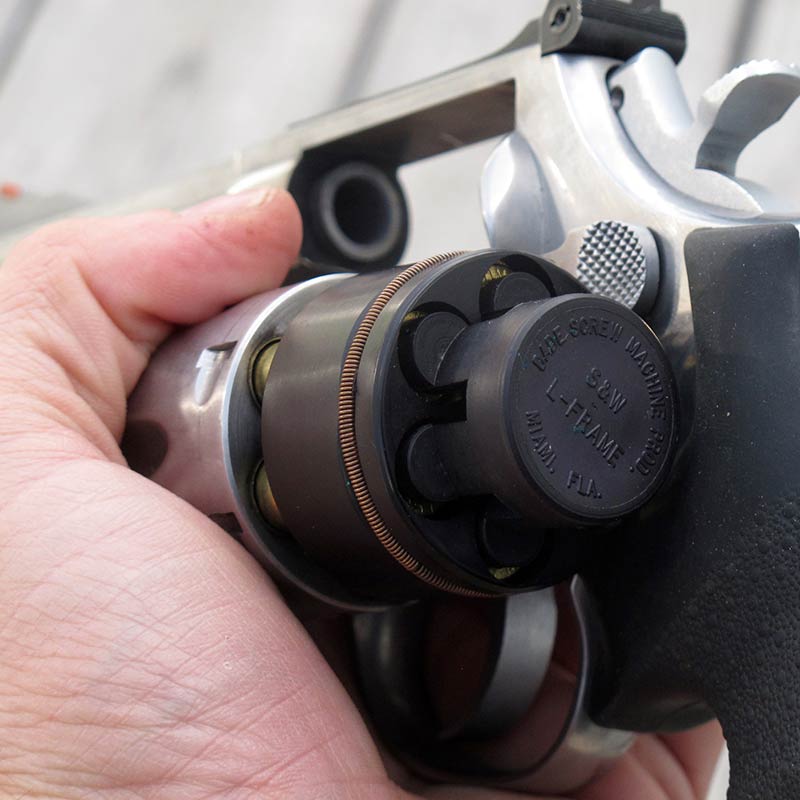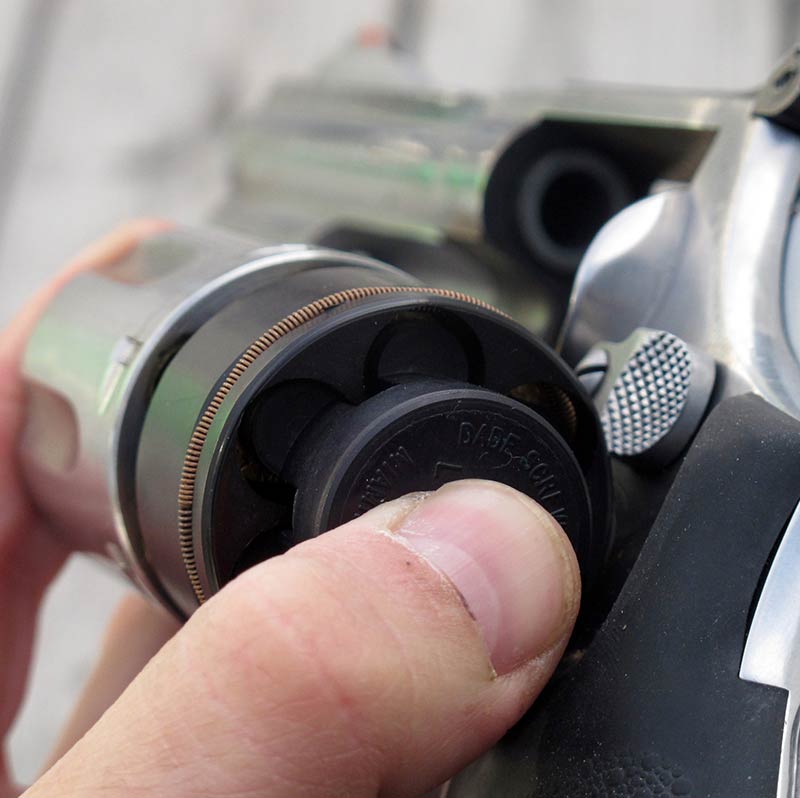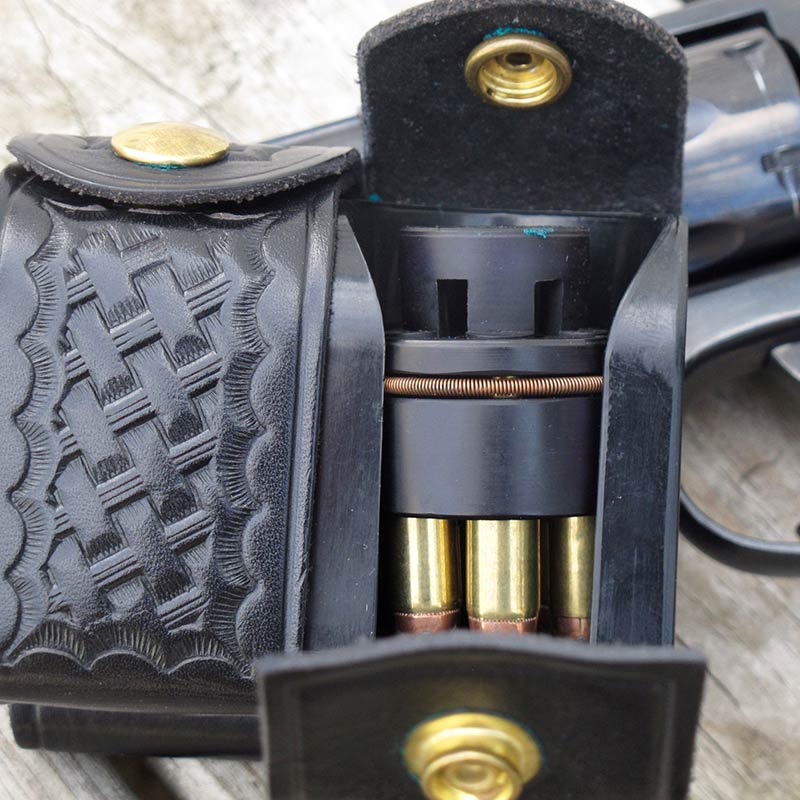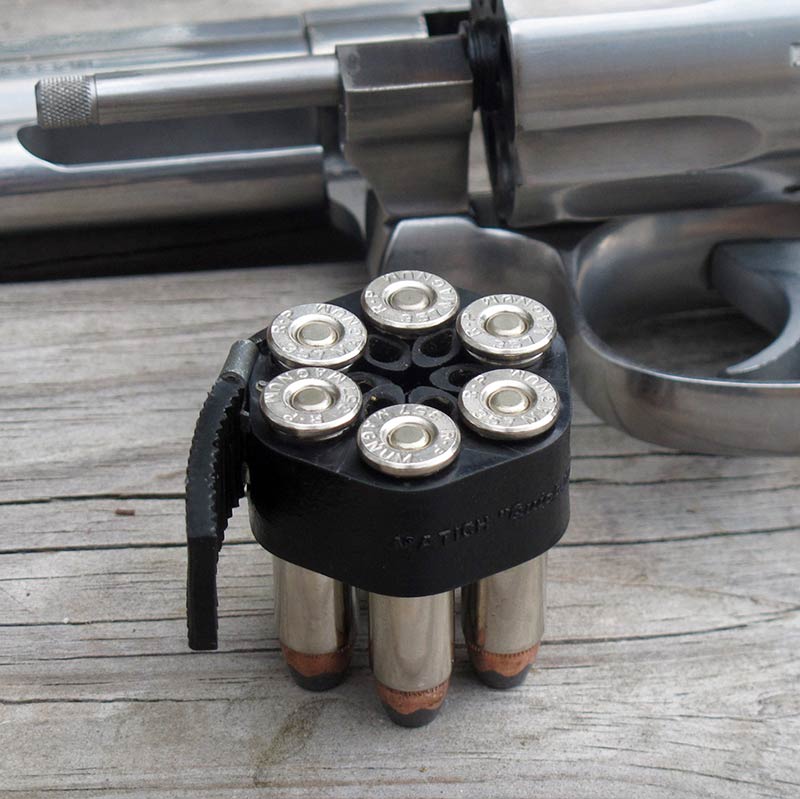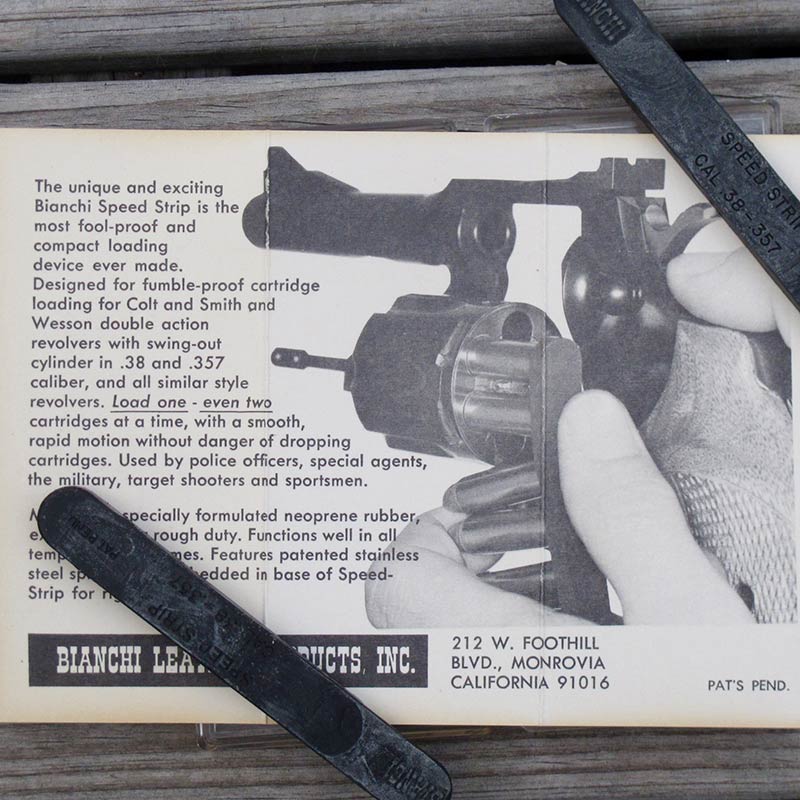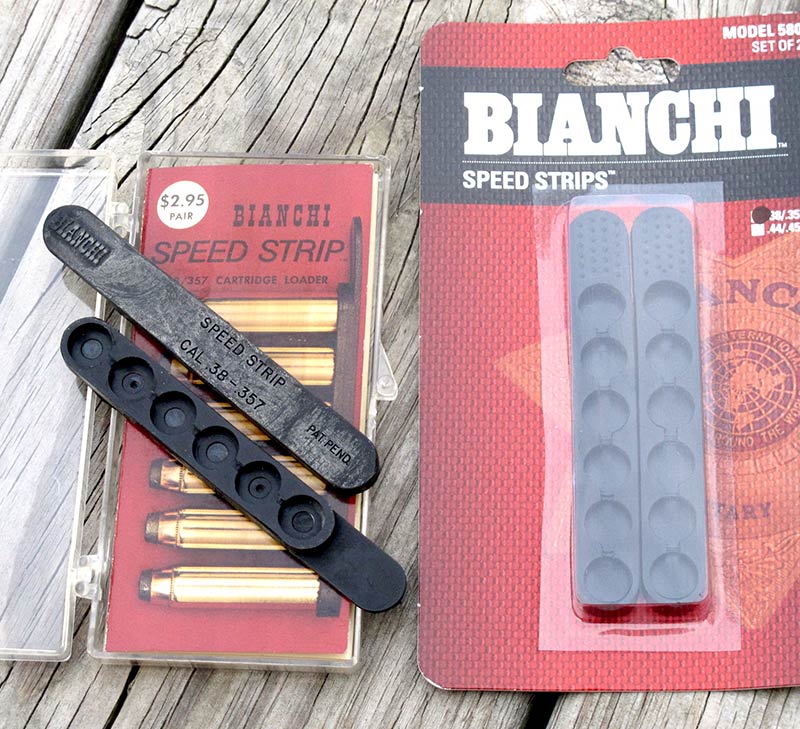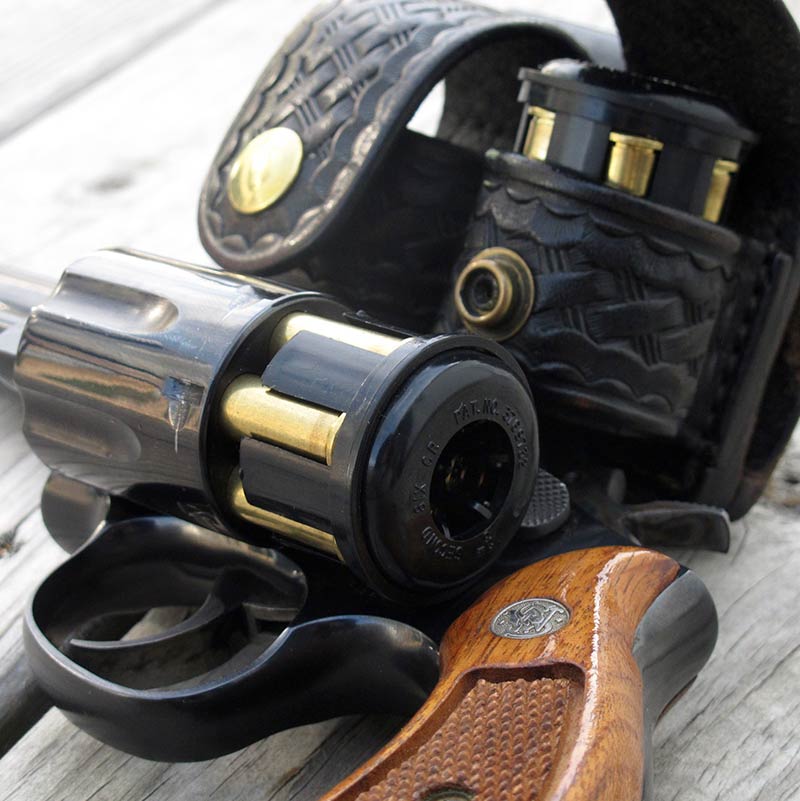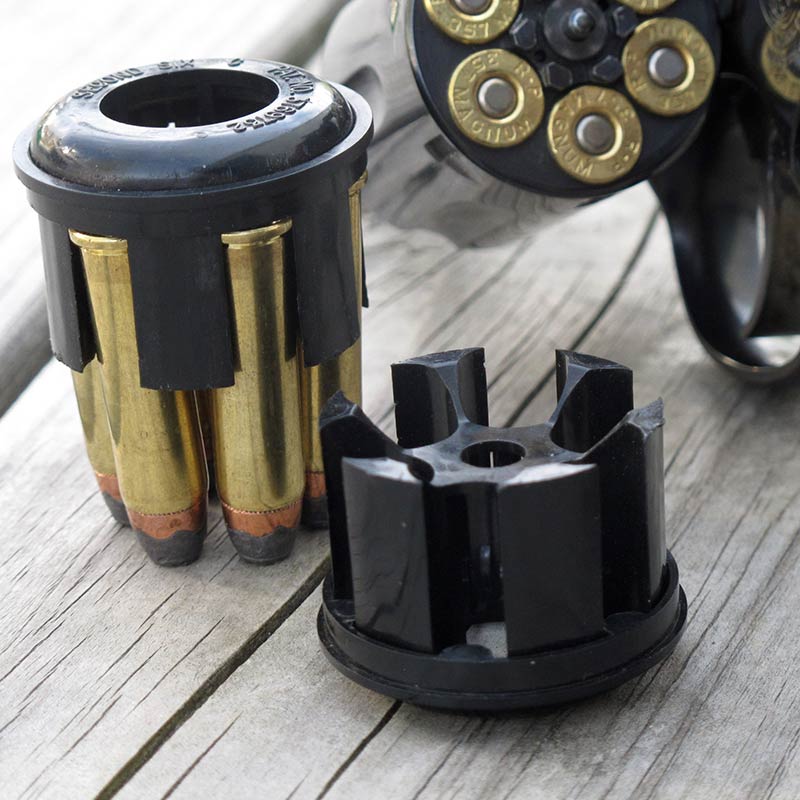Quick Load
An especially unique design was the Quick Load, from Donald Matich, patented in October of 1965. The Matich Quick Load was a flexible neoprene strip with claws holding each of the individual cartridges. It was loaded while flat, but when it was full of rounds, it was rolled up into a cylinder shape and secured with a clasp. In practice, the Quick Load was mated to the cylinder and the clasp was undone by pulling on a tab. Continuing to pull the tab would peel the loader away from the trapped cartridges, leaving the cylinder spinning like a top.
The Matich was thin and didn't suffer the interference problems of some other loaders. It also held rounds very securely when dropped. The biggest problem with this loader is (like the Hunt) it was very sensitive to user technique, and it tended to pull some cartridges out of the cylinder during loading.

